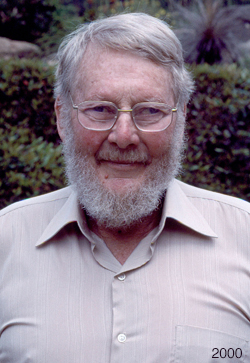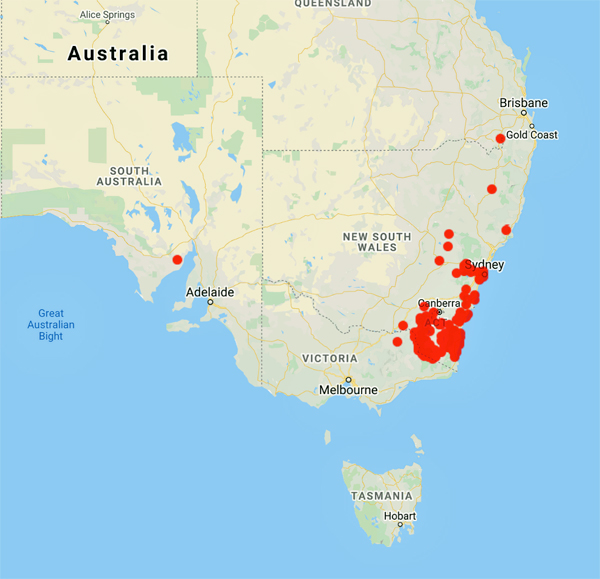
Council of Heads of Australasian Herbaria
Australian National Herbarium
Biographical Notes
 |
Council of Heads of Australasian Herbaria |
 Wimbush, Dane John (1934 - 2015)
Wimbush, Dane John (1934 - 2015)Dane's initial interest in science and botany were stimulated by childhood rambling around in bushland on the small farm he grew up on near Northmead in Sydney. He couldn't do biology at school as he was already doing physics and chemistry so his initial contact with the biological sciences was during university when he was able to study botany and zoology.
At the end of 1956 having finished final exams at Sydney University, Dane Wimbush and Jim Peacock took a holiday student's job in the Snowy Mountains at Island Bend, assisting Dr Alec Costin with his ecological work. Dane stayed on with Alec after graduation and joined the Alpine Ecology Section in the CSIRO Division of Plant Industry.
Initially Dane's work concentrated on the damage that had occurred to alpine and subalpine ecosystems over a century of grazing and autumn burning. Concurrently a study of the hydrology of sphagnum bogs was undertaken and this led to a master's thesis, submitted in 1970. Among other things the work involved monitoring the recovery of vegetation after grazing and burning ceased in 1958, and included sediment sampling from the bottom of Blue Lake.
Other studies included: runoff and soil loss from alpine and subalpine vegetation; snow surveys within the Guthega catchment; grazing trials; and surveying for, and co-authoring Kosciuszko Alpine Flora, which ran into its 2nd edition (1979, 2000).
His last seven years before retirement involved a co-operative study with the CSIRO Division of Wildlife on the effects of rabbits on snowgum woodland & subalpine frost hollows near Kiandra.
After retiring he undertook vegetation mapping from satellite imagery across the southern half of NSW for the NPWS and later acted as a consultant on the Snowy Water Enquiry. Another smaller job was to search for threatened and endangered species along the Alpine Way below Dead Horse Gap. In most of this work his wife Robyn assisted.
In his final years Dane was involved with the Atlas of Life in the Coastal Wilderness, and catalogued many plant and animal species encountered on the Far South Coast. He also acted as a moderator, ensuring the integrity of data flowing into the CSIRO Atlas of Living Australia.
Source: Extracted from: https://bourndaeec.nsw.edu.au/bournda-biota/flora/dane-wimbush/
Portrait Photo: 2000, M.Fagg.
Data from 1,166 specimens
